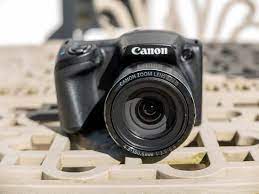Crafting a Compelling Digital Story

Storytelling is a craft as old as the first two people who sat beside a campfire, telling engaging tales to while away the time between the evening meal and time to sleep. Digital story telling is an extension of that ancient art. There are strong overlaps between it and videography.
- Select a topic that is interesting to you. It might not be interesting to others, but part of the craft of making it compelling is to capture and keep the attention of an audience. If you are not quite sure what you want to tell your story about, take a few minutes to jot down ideas. Do some research. Dig through family photo albums, browse your favorite social media, read a magazine or newspaper.
- Gather materials. This might mean going back through family photo albums, interviewing older members of the family, or taking surveys. For more formal topics, it could involve visiting a library – real or digital, reading magazines or newspapers, or even reading a few books. You might visit a museum, collect brochures, or collect pictures from a stock photo resource.
- Organize your material. This could mean placing like items in folders, putting it in alphabetical order, or taking notes on file cards. You could use a mind mapping tool to get all of the pieces in one place. You could even use a bulletin board and pin things to it, like the detectives do in movies. One important thing: as you organize, be sure to write down where you got each item so you can properly give credit to your source.
- Write an outline. With your materials in mind, create an outline. Remember, outlines are not set in stone. They can be changed as you work on your project. You might find, as you work, that you need to collect additional or different material.
- Write a narrative. Using your outline, write out what you want to say. Read it out loud several times. Keep the words simple, the style direct. Most of all, it should be You, not an imitation of someone else.
- Create a storyboard. Use copies of your materials, draw representational stick figures, or use numbers that correspond to visual materials to put your words and graphics in order. Work with matching words to visuals.
- Digitize your media. Scan photos, quotes, or short pages of text that you want to have appear in the video.
- Use Video Editing Software to finish putting your story together. This might involve adding pictures or short video clips to the program, reading your narrative either separately or directly into the project. Cutting or adjusting parts that do not flow well, and generally polishing the final product. Give yourself plenty of time to do this part. It can be challenging.
- Find a platform on which to publish or share your project. YouTube is often the platform of choice since it is free to use for non-commercial videos. Or you might use a Social Learning Management System, such as Pedagogue.
- Give yourself a pat on the back. There is nothing wrong with a little self-praise. That is a lot of work you just completed!




